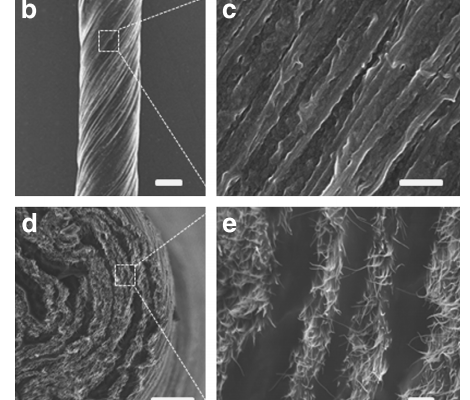 Cheong Hoon Kwon, Sung-Ho Lee, Young-Bong Choi, Jae Ah Lee, Shi Hyeong Kim, Hyug-Han Kim, Geoffrey M. Spinks, Gordon G. Wallace, Márcio D. Lima, Mikhail E. Kozlov, Ray H. Baughman & Seon Jeong Kim
Cheong Hoon Kwon, Sung-Ho Lee, Young-Bong Choi, Jae Ah Lee, Shi Hyeong Kim, Hyug-Han Kim, Geoffrey M. Spinks, Gordon G. Wallace, Márcio D. Lima, Mikhail E. Kozlov, Ray H. Baughman & Seon Jeong Kim
Center for Bio-Artificial Muscle and Department of Biomedical Engineering, Hanyang University, Seoul 133-791, Korea
Cheong Hoon Kwon, Sung-Ho Lee, Jae Ah Lee, Shi Hyeong Kim & Seon Jeong Kim
Department of Chemistry, Dankook University, Cheonan 330-714, Korea
Young-Bong Choi & Hyug-Han Kim
Intelligent Polymer Research Institute, ARC Centre of Excellence for Electromaterials Science, University of Wollongong, Wollongong, New South Wales 2522, Australia
Geoffrey M. Spinks & Gordon G. Wallace
The Alan G. MacDiarmid NanoTech Institute, University of Texas at Dallas, Richardson, Texas 75083, USA
Márcio D. Lima, Mikhail E. Kozlov & Ray H. Baughman
*Corresponding author.E-mail: sjk@hanyang.ac.kr.
원문 링크 : http://www.nature.com/ncomms/2014/140602/ncomms4928/full/ncomms4928.html